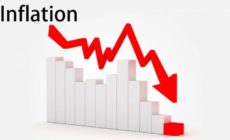According to umb, upside risks to the forecast include higher than expected world crude price increases which could translate into further adjustments in fuel prices , a possible rate hike by the United States which could tighten global financing conditions and also cause a weaker cedi .
Other risks are the deepening of geopolitical and military tensions on the global landscape, excessive demand for hard currency in the peak of the upcoming Christmas season which could cause a bearish cedi, higher than expected inflation from imports during the latter part of the year, fall army worm-driven effects which could lead to declines in food commodity supplies.
Downside risks to the projection include lesser than anticipated aggregate demand for hard currency in the Christmas festivities and unexpected decline in ex-pump fuel prices.
Headline inflation has recorded a lowering trend from the last quarter of 2016 but an increase in transport fares in April 2017 pushed inflation up.
The rates trended southward again until August (when it rose from 11.per cent in July to 12.3per cent in August owing to the upward adjustment of ex-pump fuel prices). In September, it declined marginally to 12.2 per cent.
The exchange rate is anticipated to remain fairly stable as export earnings from increased commodity production and prices continue to support the economy’s foreign reserves position.
Further, improving liquidity conditions which are reflected in the balance of trade surplus of US$1.5 billion as at mid-year 2017 against the deficit of US$1.4 billion during the same period a year ago is expected to contribute to a stable Cedi going forward. On the flip side, anticipated increases in global crude prices may translate into increased fuel prices on the domestic market, which may have upward ripples on food prices. Also, the harmful effects of fall army worm infestation on crops, if not dealt with drastically may lead to supply shortages. Further, the upcoming Christmas season may see high demand for hard currency which could exert pressure on the local currency.
Inflation for last quarter of 2017 to fall further
- Posted on
- Comment
 Inflation for Ghana for the last quarter of 2017 will stabilize, ranging between 11.8 and 12.1 per cent, umb Investment Holdings has projected.
Inflation for Ghana for the last quarter of 2017 will stabilize, ranging between 11.8 and 12.1 per cent, umb Investment Holdings has projected.










 (Selorm) |
(Selorm) |  (Nana Kwesi)
(Nana Kwesi)